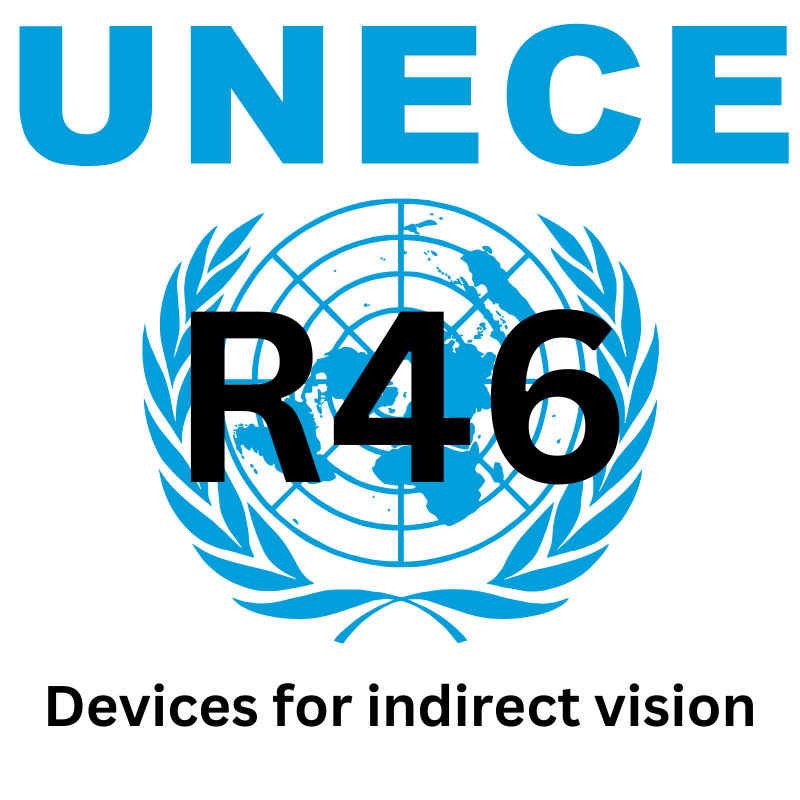Guide To: UNECE R46 - Devices for indirect vision
23 October 2024

Guide To: UNECE R46 - Devices for indirect vision
UN ECE Regulation No. 46 establishes the uniform provisions concerning the approval of devices for indirect vision in motor vehicles. These devices, which include mirrors, camera-monitor systems (CMS), and other indirect vision devices, help drivers have a clear view of the areas surrounding their vehicles, particularly to improve safety by reducing blind spots. This regulation also covers the installation of these devices on motor vehicles, ensuring that they function effectively under various driving conditions.
Scope of the Regulation
UN ECE R46 applies to:
- Compulsory and optional devices for indirect vision, such as mirrors and camera-monitor systems, installed in vehicles of categories M (passenger vehicles), N (goods vehicles), and L1 (motorcycles with enclosed driver cabs).
Key Features of UN ECE R46
Devices for Indirect Vision:
- Mirrors: These devices, mounted on the vehicle’s interior or exterior, reflect the surrounding environment to the driver. They can be standard, aspherical, or spherical, depending on their shape and function.
- Camera-Monitor Systems (CMS): CMS devices capture real-time images of the vehicle’s surroundings and display them on a monitor. These systems provide a more comprehensive view compared to traditional mirrors and are useful for eliminating blind spots.
- Other Devices for Indirect Vision: These include any device that can provide the driver with information about the vehicle’s surroundings without being a traditional mirror or CMS.
Requirements for Approval:
- Devices for indirect vision must meet strict performance criteria, including durability, reflectivity, and field of vision standards. For example, mirrors must be adjustable and provide clear rearward views. CMS systems must deliver clear images under various lighting conditions.
- Devices must also withstand impact tests to ensure that they remain functional and safe in case of accidents.
Installation on Vehicles:
- The regulation specifies how devices should be installed on vehicles to optimize visibility. Mirrors must be positioned to give the driver a clear view of specific zones around the vehicle, and CMS systems should cover areas that mirrors cannot adequately monitor.
- Additional tests and modifications may be required to adapt indirect vision systems to specific vehicle types, ensuring that the devices are effective in their designated roles.
Classifications of Devices:
- Devices for indirect vision are classified into various categories based on their function:
- Class I: Rear-view devices
- Class II and III: Main rear-view devices
- Class IV: Wide-angle view devices
- Class V: Close-proximity view devices
- Class VI: Front-view devices.
Conclusion
UN ECE R46 is a crucial regulation that ensures motor vehicles are equipped with effective indirect vision devices, such as mirrors and camera-monitor systems, to enhance safety by providing drivers with comprehensive views of their surroundings. Manufacturers must comply with these standards to ensure that vehicles meet international safety requirements, particularly in terms of reducing blind spots and improving overall visibility.